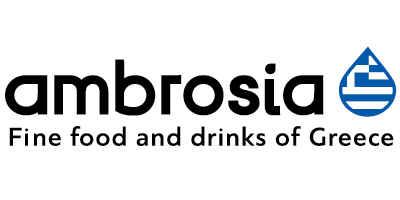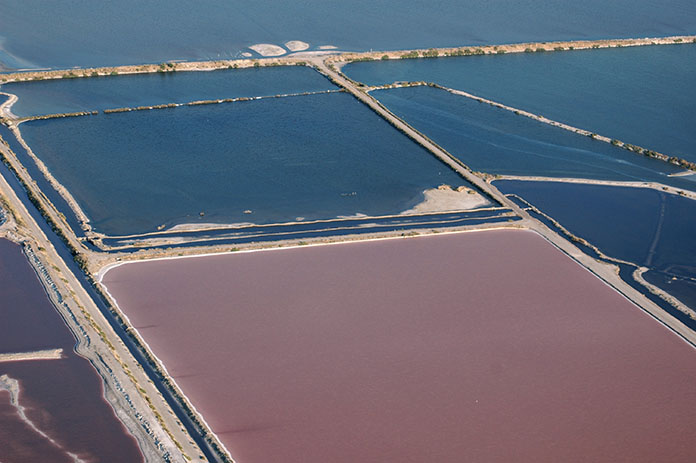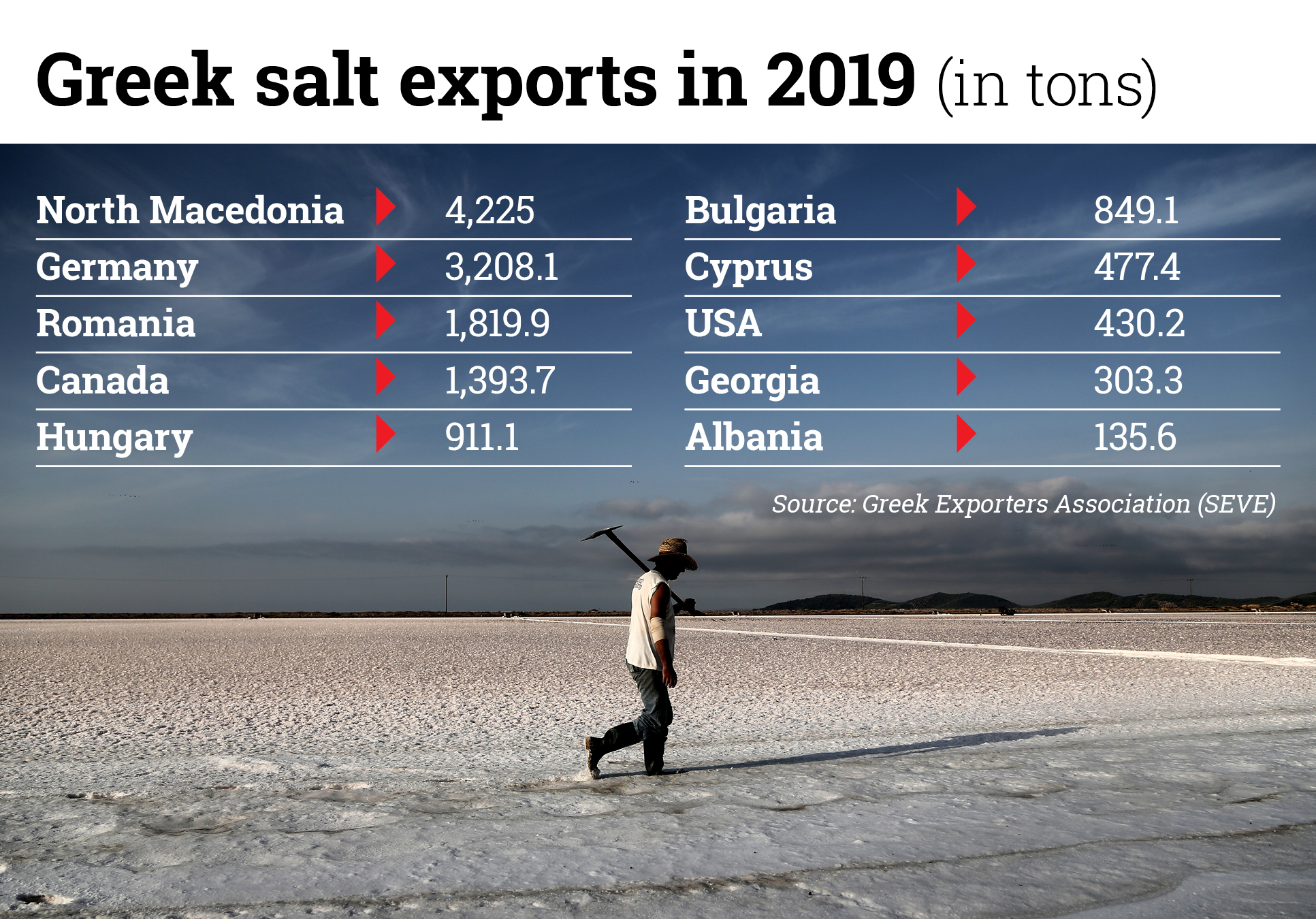Highly valued and sought-after all across the world, Greek salt is a natural product of the Greek sea, with exports amounting to €3,356,512 for 2019.
Story: Vana Antonopoulou
In Greece, salt can be found almost everywhere, a consequence to the fact that the country is practically surrounded by water. There are 8 active salt pans in the country, all of them operating under the management of the Greek government, from which over 92% of the country’s salt production, which amounts to 260,000 tons a year, is obtained: two pans in Messolonghi, two in Lesvos in Kalloni and Polichnitos, one in Kitros, Pieria, one in Aggelochori, Thessaloniki, one in Messi, Komotini, and one in Nea Kessani, Xanthi –the last four located in northern Greece. The largest, however, salt pans are the ones in Messolonghi, accounting for approximately 60% of all salt production in Greece.
Salt of the Greek seas
The two main indispensable elements in the production of salt are the sun and the sea. And Greece is famous for both. Greek salt is 100% natural and not chemically treated, while some people unofficially call it “bio” –although, according to regulations, salt cannot be considered organic, since it comes from the open sea. To wit, the Messolonghi lagoon, where most of the Greek salt production takes place, as well as the Kitros and Messi salt marshes, are ecosystems protected by the Ramsar Convention on Wetlands of International Importance since 1975 and a part of the Natura 2000 network.
Greek salt is still gathered using traditional tools, it is then washed and crushed and packaged with a minimal amount of, if any, processing. For example, the famous and sought-after “fleur de sel”, the salt that forms as a thin, delicate crust on the surface of seawater as it evaporates, needs to be harvested by hand, so this is done with traditional methods using traditional tools. Ancient Greeks called the fleur de sel “anthos alatos” aka “salt flower” and rightly so, since its unique velvety flavor and moist texture work miracles on food.
Exports show great potential
Greek salt is a superior product that is recognized throughout the world for its quality and flavor. Greek salt is minimally processed and, in many cases, enhanced with indigenous Greek herbs that give it added value –something that buyers and stores around the globe are looking for.
No wonder salt exports are thriving. In fact, although Greek salt trade has decreased around 3% in volume since 2016 (namely, in 2016, 16,376 tons of salt were exported, while in 2018, the number was down to 15,882), the actual value of exports has gone up 4.3% (€3,642,366 in 2016 compared to €3,806,231 in 2018). The top countries importing salt from Greece are Canada, Germany, North Macedonia, Bulgaria, Hungary and Romania, accounting for almost 87.2% of total international sales and bringing in €2,966,626 euros for the year 2018.
In 2019, exports were down both in volume and in value, with -11.4% and -11.8% respectively. In fact, exports amounted to €3,356,512 and 14,069.3 tons in total for the year. Canada remained the country that paid the most for Greek salt (€808,047) followed by Romania (€528,708) and Germany (€504,488), while North Macedonia imported the most in volume (4,225 tons) with Germany (3,208.1 tons), Romania (1,819.9 tons) and Canada (1,393.7 tons) coming strong behind.
On the other hand, within the first 4 months of 2020, exports were up 919.5 tons compared to the same period of the previous year (4,620 tons in Jan.-Apr. 2019 and 5,539.5 in Jan.-Apr. 2020), and +425,559 euro (€1,136,867 in Jan.-Apr. 2019 and €1,562,423 in Jan.-Apr. 2020). It is worth noting that the full effect of the Covid-19 pandemic in this particular product, still remains to be evaluated.



















 Salt pans in Messolonghi.
Salt pans in Messolonghi.

